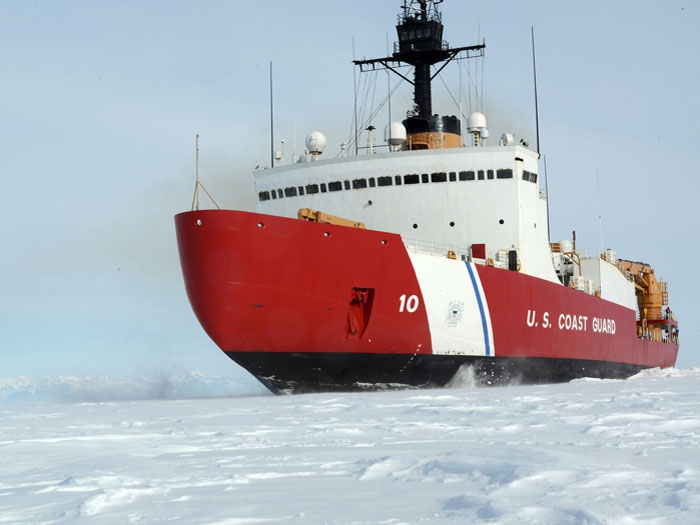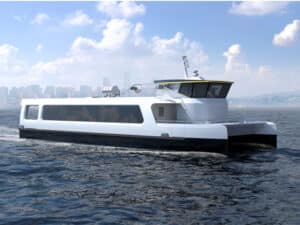Navy, USCG issue Draft RFP for Polar icebreaker
Written by Marine Log Staff
Polar Star (WAGB-10)
OCTOBER 30, 2017—The U.S. Navy in collaboration with the U.S. Coast Guard under its Integrated Program Office, recently took the next step and released a draft Request for Proposals (RFP) for the Heavy Polar Icebreaker Program. The draft RFP is for the Detail, Design, and Construction of one heavy polar icebreaker, with options for two additional ships. Interested parties will have to respond by December 11, 2017. The final RFP will be released in 2018, with a contract award expected in FY 2019—subject to appropriations. Any delay in the contract award could potentially cause a delay in the delivery of the first heavy polar icebreaker, presenting a capability gap for the Coast Guard.
This past February, the U.S. Coast Guard awarded five firm-fixed-price contract for design studies for a new Heavy Polar Icebreaker. The contracts, totaling about $20 million, were awarded to Bollinger Shipyards, Lockport, LA, Fincantieri Marine Group, Washington, DC, GD-NASSCO, San Diego, CA, Huntington Ingalls Inc., Pascagoula, MS, and VT Halter Marine, Pascagoula, MS.
Right now, the Coast Guard has the aging Polar Star (WAGB-10) as its only active heavy polar icebreaker. According to a report by the Government Accounting Office (GAO), the Coast Guard plans to extend the service life of the Polar Star to bridge a potential heavy icebreaker capability gap, but has not completed assessments to determine the cost of the plan.
According to Coast Guard planning documents, the Coast Guard faces a potential heavy polar icebreaker capability gap of up to three years between the end of the Polar Star’s service life and the scheduled delivery of the lead replacement heavy icebreaker in fiscal year 2023. While the Coast Guard considered various options to bridge this potential heavy icebreaker gap, in a January 2017 study the Coast Guard reported that it was planning for a limited service life extension of the Polar Star to keep it operational until fiscal year 2025, at an initial cost estimate of $75 million. However, the Coast Guard has not completed a formal cost estimate for this effort and we have previously reported that the $75 million estimate may be unrealistic.
An analysis by the Navy and the Coast Guard estimated that the lead ship of the new heavy polar icebreaker program could cost $1.15 billion.





Leave a Reply
You must be logged in to post a comment.